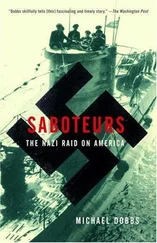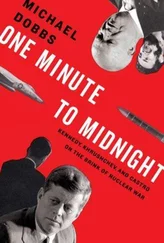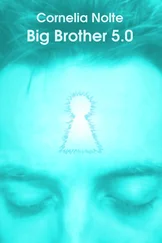For the next nine months the country waited for the spark that would ignite a full-scale war. It came at the other end of Croatia, on the border with Serbia proper, in an obscure little village called Borovo Selo.
THE BOROVO SHOE AND TIRE FACTORY LIES in a bend in the Danube River on the fertile Slavonian plain, a few miles across the cornfields from the town of Vukovar. Founded in 1931 by a Czech entrepreneur named Jan Bata, the factory soon achieved a reputation for high-quality products. During the years before World War II it was a model of modern production techniques, progressive management, and ethnic harmony. The workforce was predominantly Croat and German, together with some Serbs, whose ancestors had been brought to Slavonia to serve as frontiersmen in the Austro-Hungarian army.
The Communist victory caused a social and political upheaval at the Borovo factory. The former owners were expropriated, and the factory was taken over by the state. All the Germans were expelled. Croat managers were arrested, on suspicion of cooperating with the ustashi regime. In order to provide the factory with manpower and reward their own supporters, the victorious Communists began a major resettlement program. The place of the departing Germans was taken by Serbs and Croats from impoverished mountain regions near the Adriatic coast. There was immediate friction between the newcomers—hardened mountain people who had borne the brunt of the fighting during the war—and the native inhabitants. The mountain Serbs described the Slavonian Serbs as Schwabs, Germans. The local Serbs, many of whom were prosperous landowners, regarded the Krajina Serbs as lazy and uncouth. There were similar differences between the Slavonian Croats and the Croats from Herzegovina. These divisions later became very significant.
Ethnic hatreds had faded into the background during the postwar years. The Titoist slogan of “Brotherhood and Unity” had an effect, particularly when reinforced by the threat of long prison terms against anyone suspected of stirring up ethnic hatred. People stopped thinking of themselves as Serb or Croat. Mixed marriages were commonplace. By 1981, the year after Tito’s death, 22 percent of the local population was describing itself to census takers as Yugoslav, a catchall adjective for “South Slav.”
“There was little to distinguish Serbs from Croats,” recalled Nikola Radaković, a Serb director of the shoe factory. “We were born in the same hospital, went to the same schools, chased the same girls, and sang the same songs. We spoke the same language and wore the same kind of clothes. In fact, we were the same.” 60
The Borovo factory became a showcase for the Yugoslav system of “workers’ self-management,” which Tito invented to distinguish his brand of socialism from the Soviet variety. Delegations of admiring foreign visitors toured the factory and met the “worker-directors” who had been “elected” from the shop floor. In theory, it sounded as if Yugoslavia had the best of both worlds. Factories belonged to the workers, but there was meant to be free competition between different collectively owned enterprises. In fact, self-management was largely a fig leaf for continued Communist Party control. All appointments to senior management positions had to be cleared by the party. Most factory directors were Serbs, generally considered more “politically reliable” than Croats.
At first the system worked reasonably well. In return for their political passivity, the “worker-owners” were never fired. Loss-making departments were not closed down. The sixties and seventies were boom years for Yugoslavia—Western governments rewarded Tito’s defiance of Moscow with generous credits—but it was a false prosperity. By normal accounting standards, the Borovo factory was losing money. Factory managers later acknowledged that they spent much of their time juggling the books, in an ultimately futile attempt to conceal the losses. In order to meet the monthly payroll, they were obliged to take out huge bank loans, which were never paid back. The factory had long since ceased to invest in plant and equipment. As a result, two investment cycles were missed, and much of the shoe-making machinery was antiquated.
The logical answer to the factory’s problems would have been to dismiss half the workforce and raise the productivity of the other half by purchasing new machinery. When an attempt was finally made to follow such a strategy in 1988, the workers promptly went on strike. They camped outside the federal parliament building in Belgrade for weeks until the government caved in to their demands and granted the factory temporary relief from its debts. The government funded such loans by printing billions of new dinars, a course of action that led inexorably to hyperinflation. By the late eighties the Borovo factory had become a gigantic industrial dinosaur, employing more than twenty thousand workers. It was a symbol of everything wrong with the socialist economy: a bloated workforce; obsolescent technology; low productivity. It was also an ethnic time bomb, waiting to explode.
“The political crisis in Yugoslavia was the direct result of economic collapse,” said Josip Kovač, a Croat who worked in the factory’s financial department. “When two people are fighting for the same job, all their differences come to the surface: nationality; religion; political affiliation. If everyone had work, we would not have seen such political turmoil.” 61
At first there was little overt support in the Vukovar region for the nationalist parties. During the municipal elections of 1990 a majority of Croats and Serbs had voted for the nonsectarian Social Democratic Party. But the tradition of ethnic harmony broke down in the face of the growing economic crisis and the propaganda war between Belgrade and Zagreb. In early 1991 the Tuđman government began a concerted drive to replace “disloyal” Serbs with “loyal” Croats at all levels. In Vukovar Serbs were tossed out of the police force after they refused to wear the checkerboard emblem of the new Croatian state. As soon as it became clear that the Borovo factory was irretrievably bankrupt, several departments were forced to close. The Serbs suffered the brunt of the mass dismissals. Unemployed Croats could always find jobs in the police force, which was looking for recruits to fill the places vacated by the Serbs.
As important as the ethnic divisions between Serb and Croat were the differences between the plains people and the mountain people. The harvests were so abundant in this part of the world that anyone with land was assured a good income. In the farming villages of Slavonia there were many households with Mercedes cars and private swimming pools. Such people had no reason to fight for an even higher standard of living. They got on well with their Serb and Croat neighbors. By contrast, the landless immigrants felt the full force of the economic recession and had little attachment to the status quo. The bankrupt shoe factory became a natural recruiting ground for the rival militias and police forces that sprang up around Vukovar. The dispossessed on both sides became the officers in the coming war.
Pitting the poor against the rich was a standard Communist technique, and the Communists-turned-nationalists used it to perfection. Nationalist politicians like Milošević formed a de facto alliance with the desperate and the disgruntled. There is evidence that the Serbian secret police helped organize the paramilitary forces that spread havoc and terror, first in Croatia and later in Bosnia. 62In return for doing most of the fighting, the militia groups were promised the spoils of war.
The first barricades went up in early April around the Serb-inhabited settlement of Borovo Selo. This dreary industrial suburb a couple of miles down the road from the shoe factory was home to many unemployed Serb workers. Their plight had attracted the interest of Serb nationalists in Belgrade, including the leader of an extreme-right chetnik party, Vojislav Šešelj. The chetniks had done their best to stir up anti-Croat sentiment among the former Borovo workers and made sure that they had plenty of weapons to “defend” themselves from a Croat attack.
Читать дальше












